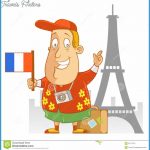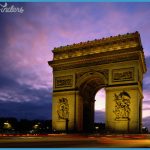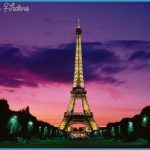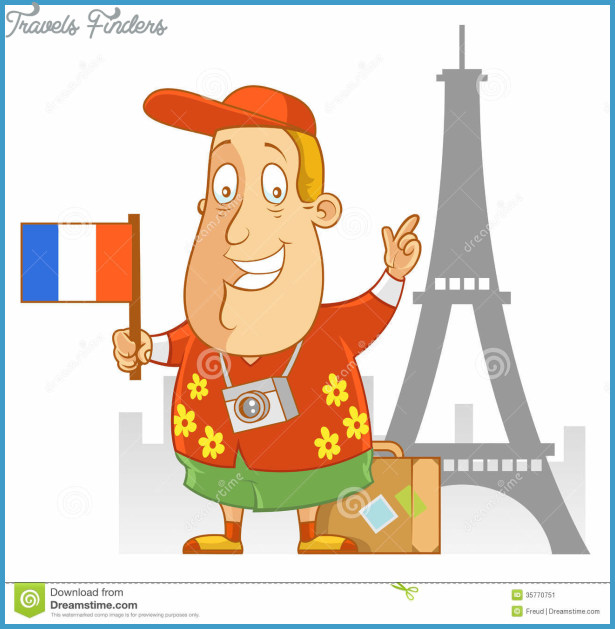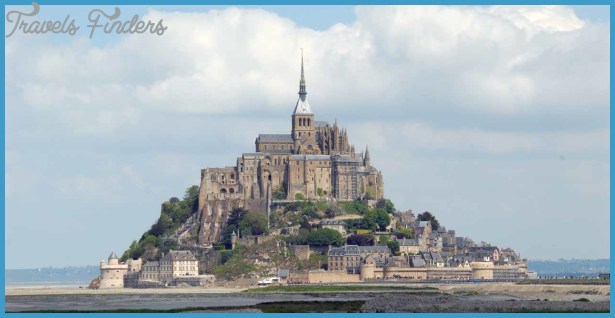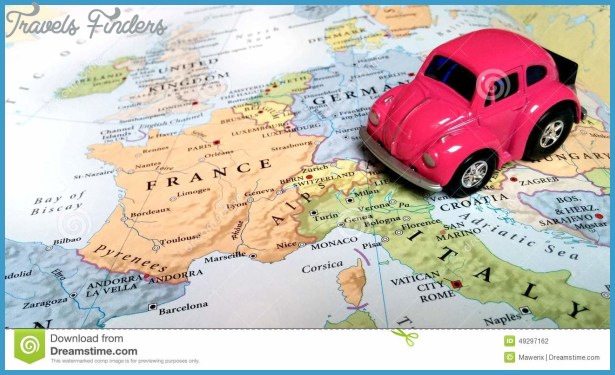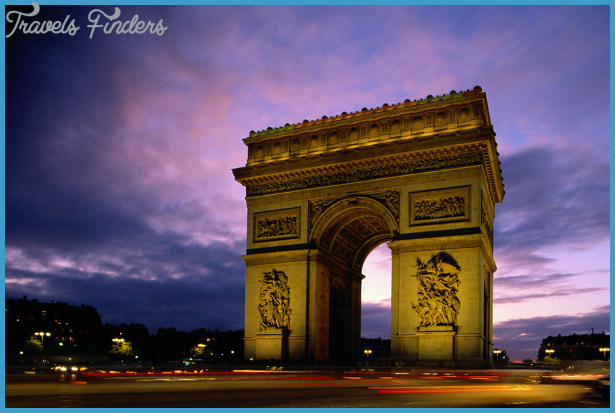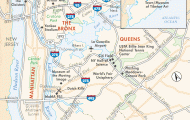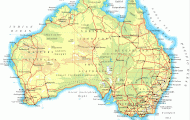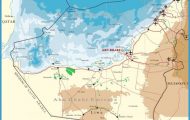Travel to France
TODAY
Facing an increasingly global society, France continues to negotiate the tension between tradition and modernity. Immigration policy remains a prominent issue, with national identity, migrant incorporation and terrorism all factoring into the debate. The 2002 presidential elections shocked the world when far-right nationalist Jean-Marie Le Pen edged out Prime Minister Lionel Jospin in the preliminary elections. He was subsequently defeated by Jacques Chirac in an 82% landslide amidst waves of protests pertaining to Le Pen’s heavily anti-immigration policies, reputed racism and dismissive remarks about the Holocaust. Still, Le Pen’s strong initial showing reflects the continuing weight of the immigration issue. Gay rights have also been a prominent debate in recent years. In 1999, France became the first traditionally Catholic country to legally recognize homosexual unions. The Civil Solidarity Pact, known by its acronym, PACS, was designed to extend to homosexual and unmarried heterosexual couples greater welfare, tax, and inheritance rights. While PACS has become so common a term in popular society that it has gained its own noun (“pacser”) and adjective (“pacse”), it is has faced a number of detractors. Conservatives seek to keep PACS a strictly legal term, as gay marriage is still a concept unwelcome to many. Gay activists are currently struggling to attain equal rights to adoption and reproductive technologies. In foreign policy, France and Germany’s opposition to US-led military action in Iraq made headlines in 2003, causing a rift in their relationship that American President George W. Bush and Jacques Chirac have recently attempted to mend.
THE ARTS LITERATURE AND PHILOSOPHY
During the 13th century, popular satirical stories called fabliaux celebrated the bawdy with tales of cuckolded husbands, saucy wives, and shrewd peasants. Calvin’s humanist treaties criticized the Catholic Church and opened the road to the ill-fated Protestant Reformation in France. In his 1637 Discourse on Method, Rene Descartes proved his own existence with the catchy deduction, “I think, therefore I am.” La Fontaine’s Fables and Charles Perrault’s Fairy Tales of Mother Goose explored right and wrong in more didactic ways. Moliere, the era’s comic relief, satirized the social pretensions of his age, and his actors initiated the great Comedie Framjaise. The Enlightenment in France was informed by advances in the sciences and aimed at the promotion of reason and tolerance in an often backward and bigoted world. Denis Diderot s Encylopedie (1752-1780) took on no smaller ambition than to record the entire body of human knowledge. Voltaire gained fame with his satire Candide (1758), a refutation of the claim that “all is for the best in the best of all possible worlds.” Voltaire’s witticisms paled in comparison with Jean-Jacques Rousseau’s Confessions (1769), which instructed readers to abandon society altogether rather than remaining in a corrupt world. The 19th century saw an emotional reaction against Enlightenment rationality; great novelists like Stendhal (The Red and the Black) and Balzac (La Comedie Humaine) penned their masterpieces, but it was Victor Hugo who dominated the Romantic age with his The Hunchback of Notre Dame (1831) .The decadence and social snobbery of the turn of the century was captured by Marcel Proust in the seven volumes of Remembrance of Things Past. Jean-Paul Sartre dominated France’s intelligentsia in the years following WWII; his philosophy of Existentialism held that life in itself was meaningless-only by committing yourself to a cause could existence take on a purpose. While Sartre worked under censorship in occupied Paris, Algerian-born Albert Camus edited the Resistance newspaper Combat. He achieved fame with his debut novel The Outsider (1942), in which a dispassionate social misfit is condemned to death for murder. Existentialist and feminist Simone de Beauvoir made waves with The Second Sex (1949), an essay attacking the myth of femininity. Its famous statement, “One is not bom, but becomes a woman” inspired a generation of second-wave feminism in the 1950s, 1960s, and 1970s. In turn, writers like Marguerite Duras (The Lover) explored gender identity, challenged Freudian “penis envy,” and sparked feminist movements in France and abroad.
THE VISUAL ARTS ARCHITECTURE. Long before the arrival of the “civilizing” Greeks and Romans, Frenchmen were making their own impressive buildings. The prehistoric murals of Lascaux (346) and Les Eyzies-de-Tayac (347) testify to the presence of ancient and well-established peoples. No such monuments stand to the ancient Gauls, whose legacy was swept away by Roman conquerors. Rome’s leavings are most visible in the arena and temple at Nimes (355). Romanesque churches, like the Basilique St-Semin in Toulouse (352), were designed to accommodate large crowds of worshippers and pilgrims, while the monastery of Mont St. Michel (336) provided a secluded religious haven. Louis XIV commissioned the world’s largest royal residence, the exorbitantly beautiful palace Versailles (332); full of crystal, mirrors, and gold, and surrounded by formal gardens, it is the pinnacle of the Baroque style. Engineering came onto the architectural scene in the latter part of the 19th century, as Gustave Eiffel created the Eiffel tower (314), now the bestloved landmark in the country. Charles-Edouard Jeanneret, better known as Le Corbusier, was the interwar pioneer in reinforced concrete that dominated much of the rebuilding effort. In the 1980s, Paris became the hub of Mitterrand’s 15-billion-franc endeavor known as the Grands Projets: The construction of the Musee d’Orsay, the Parc de la Villette, the Institut du Monde Arabe, the Opera at the Bastille, and I.M. Pei’s glass pyramid at the Louvre.
FILM. Francois Truffaut’s The 400 Blows (1959) and Jules and Jim (1961) paved the way for the New Wave movement that dominated French cinema though the 1970s. Recently, the Three Colors trilogy (1993-94), Mancrn of the Spring (1987), and Goodbye Children (1987) have moved movie-goers around the world. Actor Gerard Depardieu (Cyrano de Bergerac, 1990, My Father the Hero, 1993) is renowned for roles both serious and comic, but Jean Reno has had more luck making the transition into Hollywood following the success of Luc Besson’s The Professional (1994), Fifth Element (1997), and Taxi (1998). On the opposite end of the spectrum from the belle dejour fare is the recent spate of cinema beur, second-generation North Africans’ brutally honest documentation of life in the HLMs (municipal housing) of suburban Paris. These grafitti-decor films, such as Mathieu Kassovitz’s The Hatred (1995), confront the traumas of urban racism. Claire Denis’s Chocolate (1988) gives a voice to France’s tumultuous history of colonialism. Art cinema continues to prosper under Marcel Hanoun (Noise of Love and War, 1997) and Jacques Dolllon (Ponette, 1997), while the French flock to comedies like Jean-Marie Poire’s The Visitors (1992). Most recently, the 1999 film The Taste of Others has made waves on both sides of the Atlantic, winning a Cesar (French Oscar), several film festival awards, and a nomination for a 2000 Best Foreign Film Oscar.
ON THE CANVAS. France’s surviving medieval art would instruct the average illiterate 12th- and 13th-century churchgoer on religious themes; stained glass and intricate stone facades, like those at Chartres (333), Reims (403), and Sainte-Chapelle in Paris, served as large reproductions of the Bible. The 11th-century Bay-eux tapestry (335) unravels a 70-meter-long narrative of the Battle of Hastings. In 1515, Leonardo da Vinci trekked up from Florence bearing the smiling Mona Lisa in tow; his final home and a number of his sketches can be seen in Amboise (343). The French Revolution inspired heroic scenes from its own time; Jacques-Louis David’s Death of Marat paid gory tribute to the Revolutionary leader, while the paintings such as Eugene Delacroix’s Liberty Leading the People (1830) shocked the salons of the 1820s and 1830s. Edouard Manet facilitated the transition to Impressionism by flattening the fine shading and sharp perspectives of academic art and turning his focus to texture and color; his portrait of a prostitute in Olympia scandalized his colleagues. Claude Monet, Camille Pissarro, and Pierre-Auguste Renoir began to explore Impressionist techniques in the 1860s. Monet’s garden at Giverny (333), which inspired his monumental Waterlilies series, remains a popular daytrip from Paris. Post-Impressionist Paul Cezanne created still-lifes, portraits, and geometric landscapes using bold, geometric blocks of color. Georges Seurat took fragmentation a step further with Pointillism: Thousands of tiny dots merging to form a coherent picture. Dutchman Vincent van Gogh migrated to the south of France in search of new light, color, and imagery; the poverty and mental illness that plagued him throughout his life are reflected in his work. Similarly tortured in his art and life, Henri de Toulouse-Lautrec’s vibrant posters capture the brilliant and lascivious nightlife of 19th-century Paris. The rich colors and thick contours of Henri Matisse anticipated and rivaled Spanish-born Pablo Picasso, who developed Cubism, a technique of composing the canvas with shaded planes. By reducing everyday objects fruits, glasses, vases, newspapers Picasso became arguably the greatest artist of the 20th century, constantly innovating and breaking new ground; his career is chronicled at the Musee Picasso in Paris (320) and at the beautiful seaside Musee Picasso in Antibes (368). The loss and disillusionment that pervaded Europe after WWI prompted artists to reject the bourgeois culture that began the war. Surrealism and absurdity dominated 20th-century experiments in photography, installation, video, and sculpture; these can be seen in the collections and exhibitions of the Centre Pompidou (320) in Paris.

